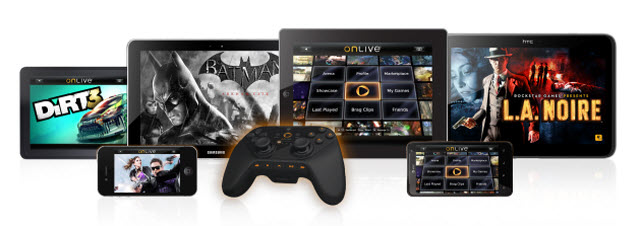
This holiday season, mobile gamers will get a chance to do something they’ve never been able to do: play console games on smartphones and tablets.
Last week OnLive – the cloud-gaming company which streams games rather than playing them natively – released an app for Android (the iOS update is still pending approval from Apple) for use with smartphones and tablets. The mobile service functions much like how OnLive streams high-quality games-on-demand to desktop computers and laptops. But now the service has been tuned to work with Wi-Fi or 4G-connected mobile devices, which typically have much less capability and bandwidth to run a high-quality game.
Users can play a total 24 games with touch-controls alone, or the entire library of OnLive’s 186 games with a new Bluetooth-enabled controller, all on select Android smartphones or tablets. And at some point, users will be able to play on the iOS devices as well.
I’ve spent the last week testing the OnLive service across Los Angeles on all four major cell providers: Verizon, AT&T, Sprint, and T-Mobile, on each of their respective networks (Verizon on LTE/CDMA, AT&T on 4G and 3G, Sprint on 4G and CDMA, and T-Mobile on 4G and 2G). For the purposes of this article, 4G will signify HSDPA/HSPA+, and all 3G networks will be branded 3G. OnLive did not run on networks slower than 3G. Tests were also done on various Wi-Fi networks, since the now-ubiquitous nature of OnLive will allow users to enjoy free Wi-Fi gaming on their phones and tablets outside of the home.
I did the tests in two ways: while stationary and while driving (up to highway speeds). Stationary tests include using OnLive in different locations with different signal strengths, from one bar to the maximum number of bars (which differs between carriers and phone models). Phones and tablets tested includes the following:
- HTC Vivid (AT&T)
- HTC Rezound (Verizon)
- LG Marquee (Sprint, 3G)
- Motorola Droid Bionic (Verizon)
- Samsung Galaxy S II (AT&T)
- Samsung Epic 4G Touch (Sprint)
- T-Mobile myTouch
- T-Mobile myTouch Q
- Samsung Galaxy Tab Wi-Fi (original, 7″)
- Samsung Galaxy Tab 10.1 (Verizon LTE)
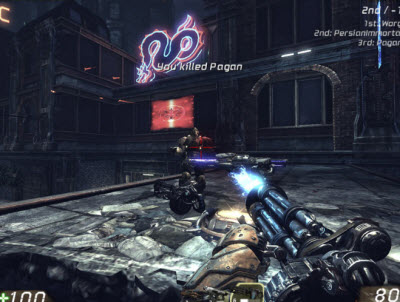 While OnLive only recommends select Android devices (and all iOS 5 devices once the app is available), in my tests the only requirement for any Android phone to work is a standard 4G antenna. Reports of certain phones not working have come up, but the app is available to all Android phone owners and works on the overwhelming majority of devices. According to OnLive CEO Steve Perlman, every phone handles decompression of the video signal differently, and only the recommended devices listed here have specific algorithms that OnLive has developed for optimal results.
While OnLive only recommends select Android devices (and all iOS 5 devices once the app is available), in my tests the only requirement for any Android phone to work is a standard 4G antenna. Reports of certain phones not working have come up, but the app is available to all Android phone owners and works on the overwhelming majority of devices. According to OnLive CEO Steve Perlman, every phone handles decompression of the video signal differently, and only the recommended devices listed here have specific algorithms that OnLive has developed for optimal results.
“We use a different compression algorithm for different networks,” Perlman added, which results in slightly different results on all cell carriers. However, to ensure the best quality of game play, “the compression algorithm changes every 4 milliseconds.” Every phone and every network acts differently, so this method stabilizes the signal across all phones and carriers. Finally, using the new Wireless Controller does not affect data speeds unless, according to Perlman, users connect multiple controllers to a single device.
I tested with three games specifically, though bounced on and off of others to make sure they worked just fine. The three were Mini Ninjas, Darksiders, and Unreal Tournament 3. Mini Ninjas and Darksiders are both titles that use virtual gamepads to play, and require no external controller. The former is a slow-paced arcade action game, while the latter is a medium-paced action/adventure title. UT3 is a fast-paced first person shooter that requires an external controller, and is the most difficult game to play through OnLive because of just how fast the game is, even using a wired connection.
A game like UT3 is extremely stressful for cloud gaming because milliseconds matter. A fast gamer will be able to tell when they click the mouse button if the trigger pulled immediately or not. Darksiders and Mini Ninjas are both easily playable over Wi-Fi with no perceptual slowdown whatsoever.
Here’s are the results of my testing per carrier:
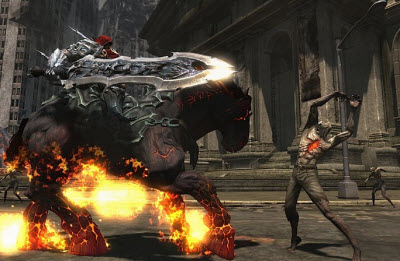 Verizon – Yes for LTE, No for CDMA
Verizon – Yes for LTE, No for CDMA
LTE networks are the fastest available today, with speeds ranging from 20 megabits per second (Mb/sec) to 60 megabits per second. OnLive requires only 1 Mb/sec to run, though recommends at least 5Mb/sec. On Verizon’s LTE network, average download and upload rates far surpassed OnLive’s requirement, and gaming quality over Verizon’s LTE network is superb. On the HTC Rezound, Motorola Droid Bionic, Samsung Galaxy Tab 10.1, and all other devices used with an LTE hotspot, the quality of games played was on par with high-speed home Wi-Fi.
With Verizon’s LTE, it didn’t matter if games were played while stationary or driving. Speeds while traveling had no noticeable impact on game play, though there were occasional stalls when driving. This is presumably due to jumping between cell towers, though Perlman told me that LTE networks are highly efficient, and there are many possible reasons for game play stalling abruptly, such as the signal bouncing around a building.
However, over Verizon’s LTE, OnLive was both playable and enjoyable, both with and without a controller. In my testing it never dropped a signal and only momentarily paused. The visual quality is excellent; video compression is smooth and almost impossible to see. Gameplay is extremely low-latency. Button presses are instantly read and, even with the occasional sputter, there is never any lag or a drop in quality. Even with a poor signal, LTE provides a high-quality gaming experience. I actually had more success over LTE in UT3 than over my home Wi-Fi, which seems absurd. Then again LTE in some areas locally is 5x as fast as my home internet.
Because Verizon’s LTE network is still fairly limited, when devices go out of range they switch over to the CDMA network, which is significantly slower. Using all of the Verizon handsets on CDMA is, except under perfect conditions (with a great connection and not moving), unplayable. CDMA doesn’t have the bandwidth capacity to really support streaming gameplay, mostly due to slow upload speeds. When in a good location with a strong connection, it’s possible to play games, but the video quality is very poor, and button presses can and often do lag.
Case in point, I played Darksiders while in the car driving on a freeway. The play experience was fine; smooth, quick, with only occasional sputters. But as soon as I lost the LTE signal, the game stalled for 5-10 seconds, and OnLive’s system kicked in and paused the game to wait for a better signal. Because Darksiders relies on checkpoints or saves, I lost some data, but was able to resume the game without concern later on.
AT&T – Yes
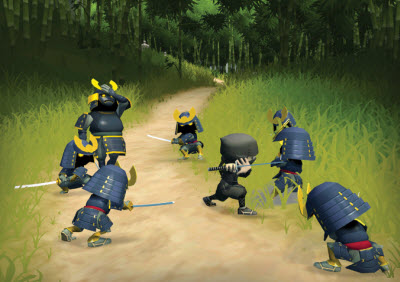 Though AT&T’s LTE is not yet available in Los Angeles, 4G is. 4G is available on a small number of handsets, including all AT&T devices listed above, as well as the iPhone 4S. Most older US-based GSM phones do not support 4G, though utilizing the network does not require any new technology. European handsets have used the technology for over three years.
Though AT&T’s LTE is not yet available in Los Angeles, 4G is. 4G is available on a small number of handsets, including all AT&T devices listed above, as well as the iPhone 4S. Most older US-based GSM phones do not support 4G, though utilizing the network does not require any new technology. European handsets have used the technology for over three years.
Over 4G OnLive is both playable and enjoyable. It doesn’t match the fluidity and visual acuity of LTE, but for game play that’s a moot point. Because 4G required only minimal change to AT&T’s current infrastructure, the network is universal nationwide: if you have a 3G connection, then you have 4G too. When Verizon phones when out of range of LTE, AT&T models continued playing without experiencing any lag or stalling.
Both stationary and when in motion, 4G on AT&T proved to have good to great quality for OnLive gaming. Video quality is very good, there is minimal lag, and the overall experience is low-latency. While it’s not quite as good as on Verizon’s LTE network, AT&T with 4G is the only carrier that I can recommend playing games through OnLive for car rides consistently, with a 4G-ready device. However, fast-paced games like UT3 showed some strain, mostly because of the amount of upstream bandwidth required for all of the button presses. Considering UT3 is one of just a handful of FPS titles currently available through OnLive, this slowness isn’t as big a concern as it may seem. Then again, pulling the trigger 50 times and only getting 45 shots is a problem, especially if you’re playing against friends online.
On 3G, just like with Verizon’s CDMA, the quality is exponentially worse, and it isn’t playable except with a good connection and not moving. AT&T is the only network where it was actually difficult to find areas with one or two bars, or generally poor reception. There are holes in the network, but they are generally very small and limited to canyons and rural roads, by the coast. In general, with poor reception OnLive will pause game play until the phone/tablet picks up a stronger signal.
AT&T, however, is also the only carrier that had could not connect to OnLive’s servers 25 percent of the time. This is likely due to data overloads at local cell towers, because it only occurred during high-peak times and only in certain locations. I found no evidence of this on any other service provider.
Sprint – Yes, but only if you have 4G
 Sprint is the only CDMA service provider with a 4G network, though their tested data speeds in Los Angeles match AT&T and T-Mobile in download transfer rates. Sprint also has consistently faster upload transfer rates, measuring at up to 2Mb/sec, compared to AT&T’s bouncing average of 1.5Mb/sec and T-Mobile’s 1Mb/sec. This gives Sprint an advantage in overall game quality compared to competing 4G providers.
Sprint is the only CDMA service provider with a 4G network, though their tested data speeds in Los Angeles match AT&T and T-Mobile in download transfer rates. Sprint also has consistently faster upload transfer rates, measuring at up to 2Mb/sec, compared to AT&T’s bouncing average of 1.5Mb/sec and T-Mobile’s 1Mb/sec. This gives Sprint an advantage in overall game quality compared to competing 4G providers.
Sprint is also the only provider that offers true unlimited data plans, which if you want to stream games over your cellular network is a big deal. Data usage has not been tested for this article.
Because of the slightly higher upstream bandwidth, Sprint’s 4G provides a better experience than both AT&T and T-Mobile. Upstream bandwidth is crucial to OnLive to ensure button presses are registered, and quickly. There is a slight difference in game play between the three 4G providers, and Sprint is the best. Image quality is high, general game play is smooth and fast, and the overall experience is very strong. UT3 and Darksiders were both noticeably faster and had better visual quality, though because of the less reliable nature of Sprint’s 4G, sometimes when (presumably) switching cell towers the last button(s) pressed would stick for 3-5 seconds. In Mini Ninjas and Darksiders, this often meant running in circles uncontrollably. In UT3, it almost always meant certain death.
However, Sprint has two serious flaws for OnLive. The first is that Sprint’s 4G technology is a massive battery drain, which is extreme relative to both AT&T and T-Mobile. Testing on the Samsung Epic 4G Touch, which has decent battery life, gameplay ranges from 2.5-3 hours on 4G. Play time is significantly longer on various AT&T and T-Mobile devices because it uses the same signal as 3G.
The second is Sprint’s limited 4G coverage. While Sprint’s 4G is nationwide, as the third largest carrier its range is significantly less than AT&T’s 4G. At least in Los Angeles, I’ve found that cell strength and areas where 4G is provided has dropped significantly in the past few months. Sprint’s 4G may be better suited for OnLive than AT&T, but the overall reach of Sprint’s 4G is severely limited by comparison. Because of this users on the periphery of a 4G network will not have a high-quality gaming experience; with one-two bars, video quality plummets, and game play can be unplayable if the upstream bandwidth is too low.
T-Mobile – Yes, in good areas
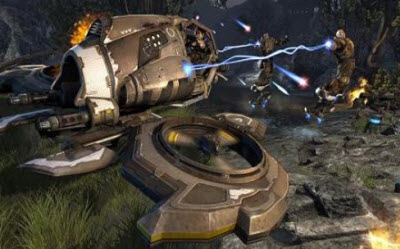 T-Mobile, like AT&T, has been able to simply upgrade their 3G towers to 4G with minimal effort, though T-Mobile is a much smaller company with significantly fewer customers. T-Mobile’s 4G network is also the slowest of the three 4G carrier’s, and at many times during the testing proved to be the most problematic service provider for cloud gaming.
T-Mobile, like AT&T, has been able to simply upgrade their 3G towers to 4G with minimal effort, though T-Mobile is a much smaller company with significantly fewer customers. T-Mobile’s 4G network is also the slowest of the three 4G carrier’s, and at many times during the testing proved to be the most problematic service provider for cloud gaming.
This is because T-Mobile’s upstream transfer rate jumps around 1Mb/sec, and even when staying put, can bounce down to 500Kb/sec. I’m not sure why this occurs, and T-Mobile is the only service provider with such massive fluctuations in data transfer speeds. (Verizon’s LTE also fluctuates greatly, but at 20Mb/sec+ speeds, so it isn’t noticeable.) That said, playing games through OnLive is possible, but the quality is lower than other carriers. Like with Sprint, switching between cell towers has a noticeable lag, though the occasional waves of slower data streaming makes the dummy action occur more frequently. Once I found that while firing in UT3, after the lag ended, I suddenly had no more ammo for that weapon. Though I suppose I’m lucky to have survived.
Video compression isn’t as good, and there’s regular video fragmentation and video downgrading (where the video quality drops to improve overall game play). Even when not driving, waves of low-quality video and slower game play occur, making it difficult to play, especially with fewer cell bars. With three bars or more, game play remained steady, but with two bars stalls occur regularly and fast-paced gaming becomes impossible. With one bar, OnLive even on 4G is unplayable.
Driving, T-Mobile handles OnLive fairly well, though only so long as users remain in 4G areas. On major highways, freeways and in large population centers, this isn’t a problem, but in more rural areas there are obvious holes in the 4G network where it drops to 2G, which will pause the service and not allow game play to resume until a solid 4G connection is reestablished. T-Mobile is the only network where this occurs regularly; both Verizon and Sprint at least have the 3G connection, which is enough to pause the game and save it. If you use T-Mobile and lose 4G, OnLive’s servers will kick you off after five minutes.
Coffee Shop Wi-Fi
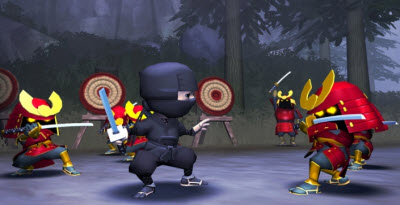 As mentioned earlier, with OnLive available on smartphones and tablets, it’s no longer farfetched to use the service on public Wi-Fi. There is one major caveat to using public Wi-Fi, as Perlman told me: users have no control over the type of Wi-Fi signal used. While newer 5GHz wireless routers will be able to provide a solid connection, 2.4GHz signals can instantly lose their speed if one person connected to the network is using an older 802.11a/b transceiver. Unfortunately, there is no way to control this except by upgrading the router.
As mentioned earlier, with OnLive available on smartphones and tablets, it’s no longer farfetched to use the service on public Wi-Fi. There is one major caveat to using public Wi-Fi, as Perlman told me: users have no control over the type of Wi-Fi signal used. While newer 5GHz wireless routers will be able to provide a solid connection, 2.4GHz signals can instantly lose their speed if one person connected to the network is using an older 802.11a/b transceiver. Unfortunately, there is no way to control this except by upgrading the router.
Yet if OnLive is as data-heavy as I expect, users will not want to rely solely on LTE or 4G networks to play. I tested free Wi-Fi in several randomly selected locations, and the results vary based on several factors discussed below. Overall, the quality of gaming over Wi-Fi is as good as 4G, though without any hiccups in quality. Tested locations all had different data speeds and different conditions, but the general consensus is that OnLive is playable over public Wi-Fi so long as the factors explained below do not interfere.
The three factors that can spoil public Wi-Fi gaming are walls or objects that interfere with the signal, the type of network, and congestion. The latter two cannot be controlled. Walls, buildings, or even passersby can cause interference with the wireless signal and cause a stall, though most malls or larger places with free Wi-Fi have wireless repeaters high up to avoid causing too much interference.
What type of network (ie open, WPA, WEP, etc.) influences speeds as well. In my testing, the more open the network is, the faster OnLive runs on it. Congestion, or how many users are on the Wi-Fi network and how heavy their wireless use is, will consistently be the biggest hurdle. In my testing I found that coffee shops including Coffee Bean and Starbucks, and local malls and other free Wi-Fi networks are all suitable for online play. It just depends on how many people are actively using the network, and how much bandwidth is available.
Conclusion
Below, I’ve made a simple chart that shows all of the above data, based on the quality of gameplay. Scores are out of five, where five is the best. Green signifies gameplay is good enough to not have noticeable lag for most players, orange is some lag and slowdown, and red is not recommended play. N/A are networks that are not available per provider.
Stationary
Moving
Overall the best provider for OnLive is AT&T, because of its large and widespread 4G network. Verizon’s LTE is the best for actual gameplay, but unless you live in or stay within LTE-enabled areas, eventually you will lose that signal and not be able to continue playing. With 4G, AT&T rarely has that problem.
Sprint, however, may prove to be a better choice because of its unlimited data plan. While I am still testing to determine data usage for OnLive, the streaming service will undoubtedly use a lot of data, which may mean trouble for anyone who does not have an unlimited plan, either with Sprint or grandfathered from AT&T.
OnLive recommends Verizon or AT&T LTE because of the low-latency and high-efficiency nature of the faster network, and LTE offers the highest quality OnLive gameplay. Yet for good, solid gameplay that is possible over long distances and in most areas, AT&T’s 4G network proves to be the best.
While testing, I hooked up a tablet to the back of a seat in my car. Playing full-fledged PC games on a full-screen tablet, like the Samsung Galaxy Tab 10.1, is astonishing. It’s just not an experience possible in any other way, even with the minor hiccups. And while it does make a difference which of the four major providers you have, especially while driving, the fact is with at least a 4G connection they all will stream high-quality titles, over the air, right to you. It’s just amazing. Now you have a sure-fire way of shutting your kids up for those long car drives.
[Note: images are not OnLive screenshots]
VentureBeat's mission is to be a digital town square for technical decision-makers to gain knowledge about transformative enterprise technology and transact. Learn More
